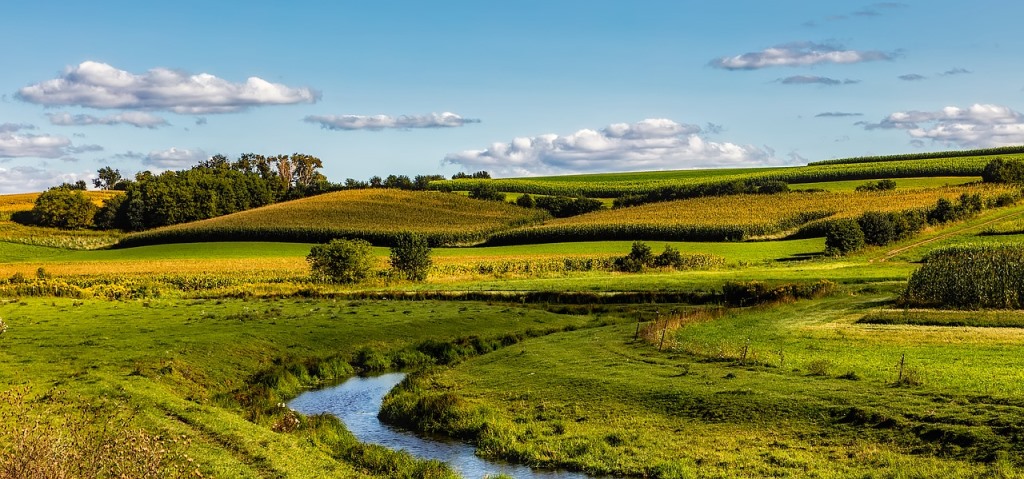On March 15, 2021, the U.S. Department of Agriculture (USDA) invested $28 million in six new Wetland Reserve Enhancement Partnership (WREP) projects and four ongoing projects.
Via this work, USDA hopes to enable restoration partners and agricultural producers to work together to return critical wetland functions to agricultural landscapes. Partners will contribute $2.82 million, bringing the total investments to $30.82 million.
“Wetlands have tremendous benefits ranging from cleaner water, to flood prevention, to enhancing wildlife habitat to sequestering carbon,” said Terry Cosby, acting Chief for USDA’s Natural Resources Conservation Service (NRCS). “The Wetland Reserve Enhancement Partnership helps partners cover more ground with producers in expanding the footprint of healthy wetlands across our country.”
Since 2014, WREP projects across 11 states have resulted in 136 closed wetland easements and wetland easements pending closure, protecting more than 27,425 acres. In total, NRCS has supported landowners in protecting more than 2.85 million acres through wetland easement programs nationwide.
New projects include:
Tri State: The Nature Conservancy
This existing project seeks to enroll an additional 2,000 acres per state, totaling 6,000 acres, in Agricultural Conservation Easement Program (ACEP) Wetland Reserve Easements (WRE). The project focuses on restoring forested wetlands within priority portions of the Mississippi Alluvial Valley in Arkansas, Louisiana and Mississippi, including specifically targeting priority watersheds of the Mississippi River Basin Healthy Watersheds Initiative area. The proposed project is Phase III of a continuing effort that began in 2017. Existing efforts have resulted in more than 3,800 acres of easements that have been acquired or are pending in the project area to date. NRCS will invest $8.35 million for the first year.
Iowa Skunk River: Iowa Dept. of Natural Resources
This existing project, which initially targeted 1,800 acres for habitat restoration and permanent protection, now seeks to enroll and restore 700 to 1,000 additional acres of riverine wetland and grassland habitats. Now in its second phase, the project aims to restore important monarch habitats through floodplain wetland and grassland restoration, restore off-channel and wet meadow wetlands, and provide reduced sediment and nutrient delivery to the Skunk River system. First-year activities are fully funded by partner contributions.
Bayou du Chien: The Nature Conservancy
This project seeks to enroll 2500 acres over the next three years to improve wildlife habitat through the development of large, contiguous blocks of protected land to benefit priority species. It also aims to improve water quality in both local watersheds and the greater Mississippi River basin by directly reducing excess nutrients and sediments through floodplain reconnection and restoration. NRCS will invest $3.15 million for the first year.
Lower Mississippi River Batture Phase VI: Mississippi River Trust
This existing project seeks to build on sustainability efforts and water management in the active floodplain of the Lower Mississippi River, or the Batture, thus providing significant ecological, economic and societal benefits. Partners propose to facilitate the enrollment of an additional 9,000 acres of privately owned, predominately cleared, flood prone land in wetland easements along the Batture area. The project also helps agricultural producers by removing frequently flooded land from production and eliminating the expenses and subsidies associated with farming that land. The proposed project is phase six of a continuing effort that began in 2012. Current efforts under phases one through five have resulted in acquired easements or easements pending for more than 22,000 acres of land in the project area. First-year activities are fully funded by partner contributions.
Texas Mid-Coast Initiative: Ducks Unlimited, Inc.
This project seeks to enroll nearly 700 acres of wetlands to conserve priority wetland habitats for migratory birds and other state and federally listed species through restoration and enhancement efforts. The project also aims to improve habitat conditions for fish and wildlife and to improve the overall health and freshwater flows of streams and riparian areas into the coastal bays and estuaries. Land protection through wetland conservation easements and subsequent restoration activities will ensure that habitat needs are met for critical wildlife species and that these systems will function as intended to improve water quality and quantity over the landscape and eventually into the coastal bays and estuaries. NRCS will invest more than $970,000 for the first year.
Nebraska Playa Wetlands: Nebraska Community Foundation
This project seeks to enroll 450 acres of playa wetlands to protect, restore, and manage wetland ecosystems and associated uplands. Restoration of these wetlands and associated upland buffers will help provide habitat for a variety of plants and animals that depend on thriving wetlands, wetland forests and grasslands, and creating a win-win situation for producers, migratory birds, resident wildlife and the citizens of rural communities. Wetland restorations are expected to address multiple resource concerns, including wildlife habitat, water quality and water quantity. NRCS will invest more than $860,000 for the first year.
The balance of the $28 million initial NRCS investment after the above projects are funded is $14.7 million which provides funding for four projects now in their second year.
Photo of Wisconsin farmland by David Mark from Pixabay.

